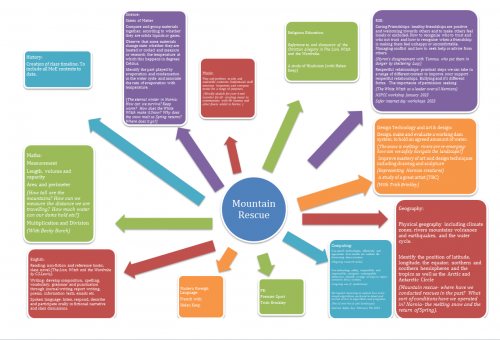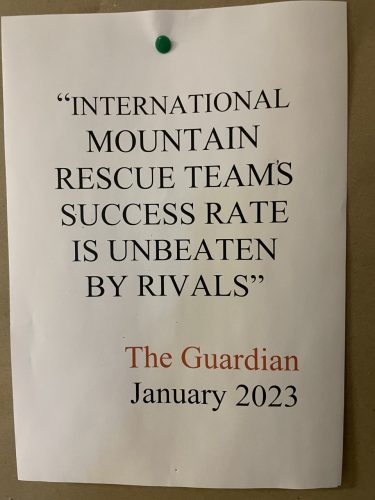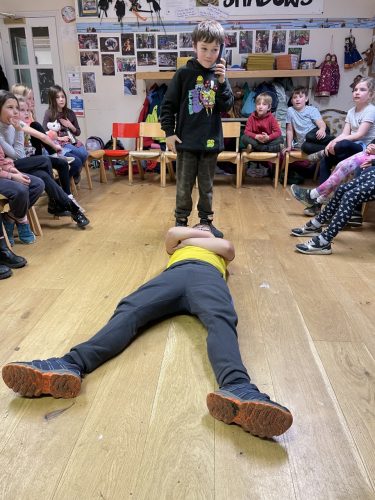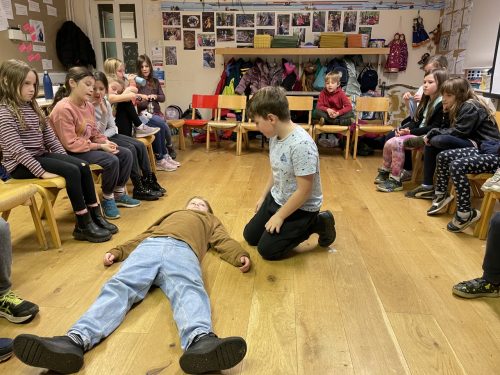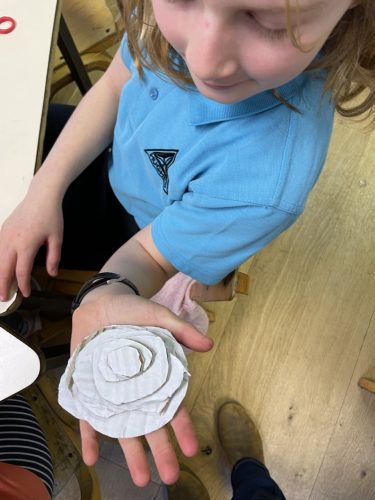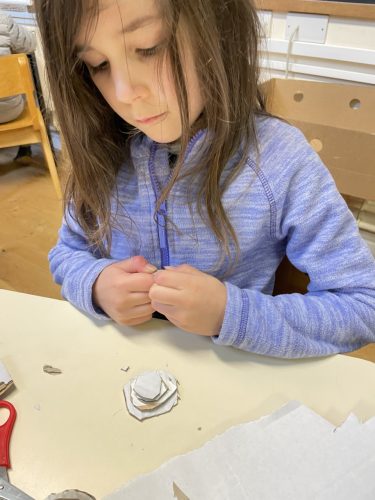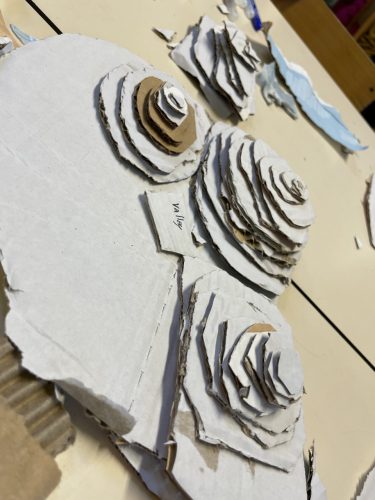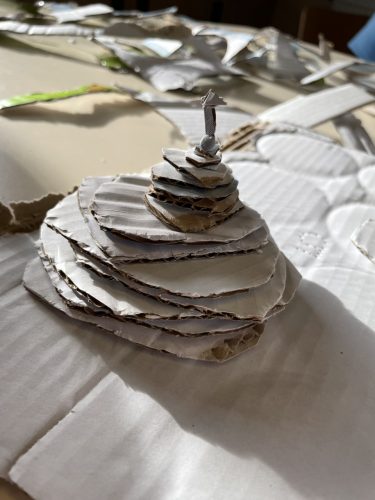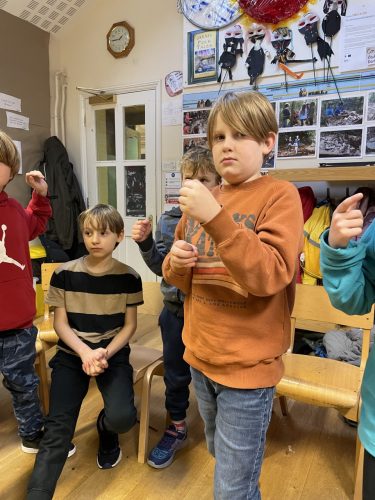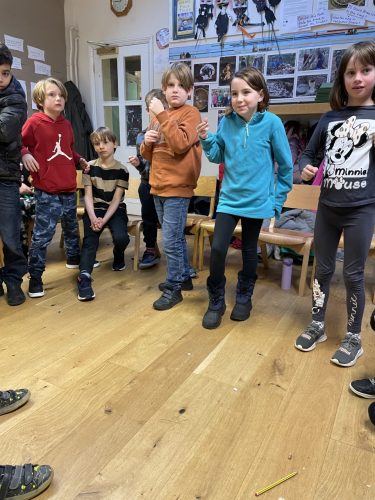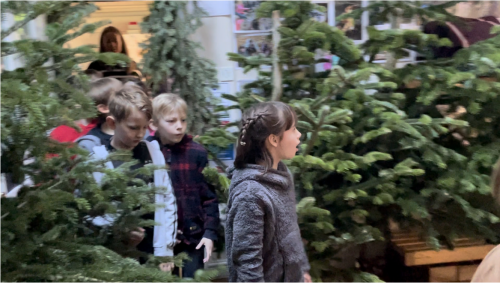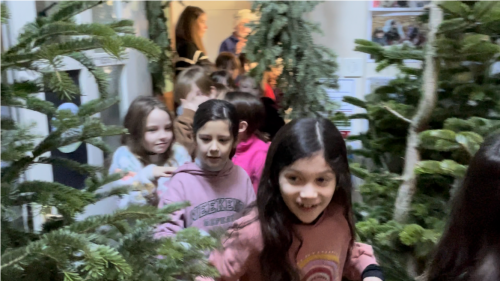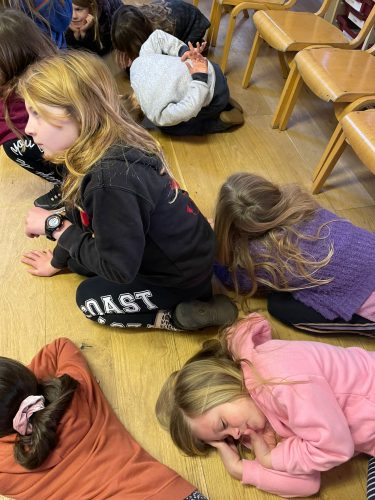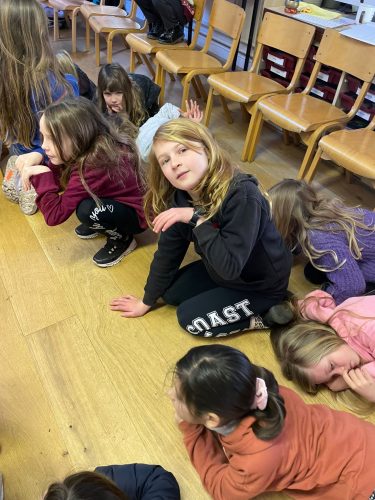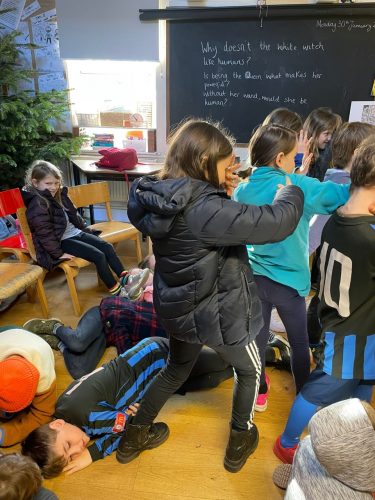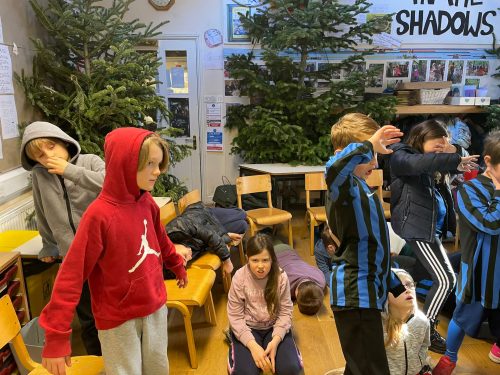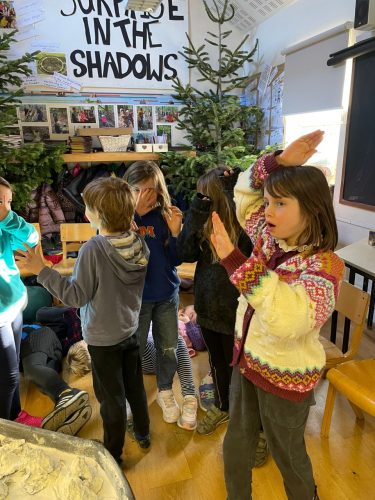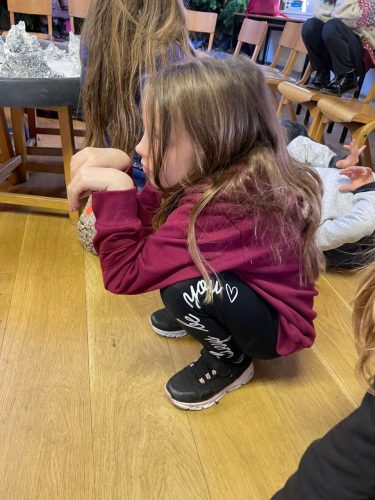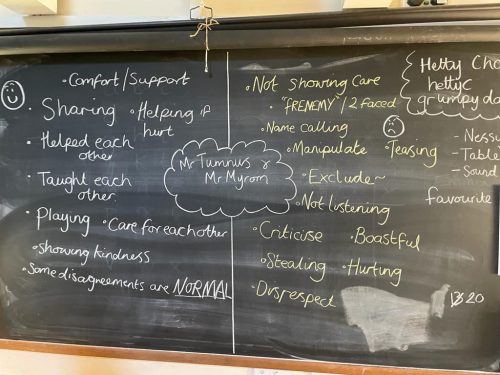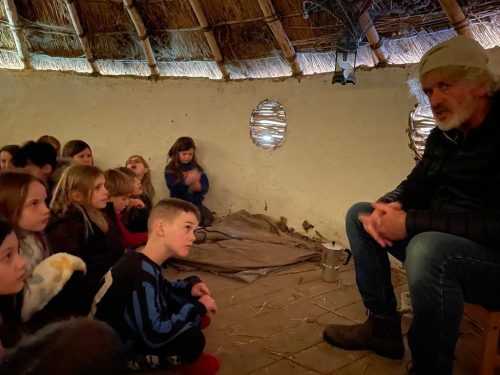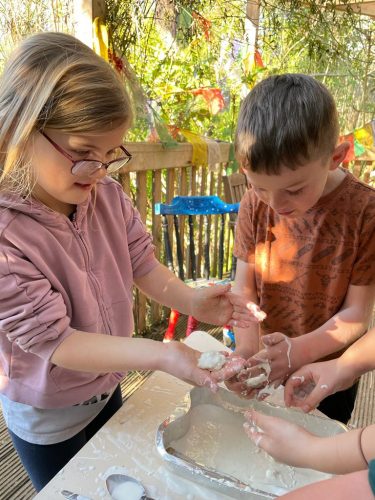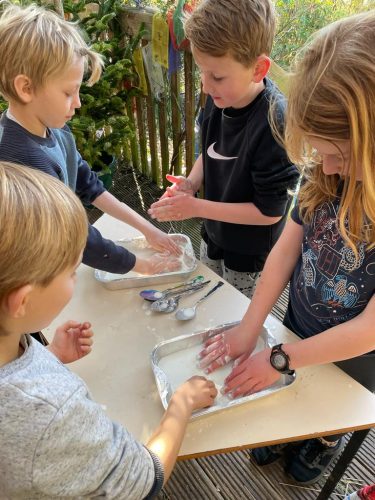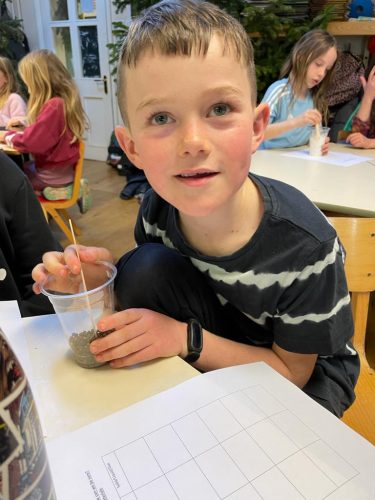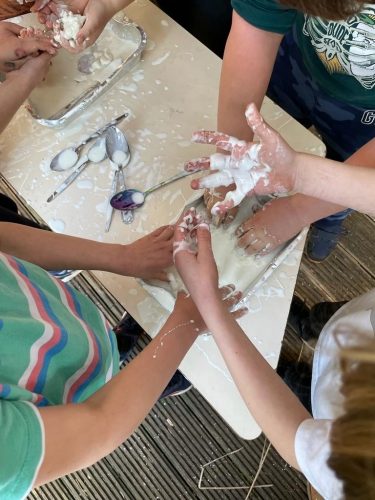Weeks 1 & 2
What a busy couple of weeks for the class, who this term will assume the expert role of an international mountain rescue team.
Into the action straight away; the team (in role) meet with Samira Malhotra of MI6 (teacher in role). The mission is a matter of national security and the team must operate under a policy of absolute secrecy. Someone, who is known to be vulnerable, and who holds vital information is currently located in the somewhere in the Swiss Alps. A more precise location is to follow, but in the meantime, we are to prepare ourselves and be ready to travel at a moment’s notice.
During the initial discussion, we discover that our first aid training is not up to date, and so begin a course which covers the following areas: How to call for help in an emergency, how to identify and treat a head injury, and what to do if someone has an asthma attack. (RSE curriculum)
It is also suggested that we will need to draw upon our knowledge of mountain regions and terrain. We locate some of the world’s mountain ranges in an atlas, and explore the varying ways that mountains can be identified on maps. We identify some of the key language we will need such as summit, base, ascend/descend, elevation etc. This leads us to look closely at contour lines, and how they can be read. We make our own mountain ranges using cardboard cutouts and find it easy to see that the closer the lines are together, the steeper the terrain.
We begin to imagine our company history and, using dramatic convention, we create scenes from our most famous (and perilous) rescues. We take the opportunity to begin to write recounts of these rescues. to be shared next week!
Weeks 3&4
Exquisite writing is produced, following drama episodes exploring our previous work as mountain rescue.
We hear again from Samira Malotra, this time via email. She gives us the GPS location of the target’s last known position. We use digital satellite mapping to explore the area- and this leads us to study some of the language we require and what it means. We learn about latitude, logitude, the tropics and the equator.
Back in role we explore the area. Children are invited to ‘create’ the landscape around the target’s last known location. there are several points of interest: a deserted cabin, some campfires which have only recently been put out, and sightings of what we preseume to be a yeti (though we agree we cannot guarantee it is not something else). Hetty reveals something which is found inside the deserted cabin… It is a wardrobe, with a note on the door. The note says, PLEASE HELP ME. It is decided that this must be the location of our target.
We prepare to explore the cabin (in role). We speak of our feelings of excitement and trepidation as we don our safety gear and make checks. We enter the wardrobe.
An astonishing sight awaits us. 15 foot high fir trees tower above us (in real life- thanks to parents and teachers for the installation!) A lampost greets us. Gasps are heard. Whispers around the room echo what most of us are now thinking. We are in Narnia! We overhear a conversation (Teacher and TA in role). They seem to be disagreeing about whether or not to help us- “You know what happened to Tumnus and Mr Myrom!” “Her spies are EVERYWHERE”
Of course, the children immediately question who Mr Myrom is and so are given the opportunity to hear part of his story. He (Teacher in role) tells us of his friendship with Mr Tumnus, and how they are no longer friends, because Tumnus gave Lucy over to the White Witch. He is now being hunted by her- and she is unaware that he is able to move freely between Narnia and Spare Oom.
We create journals to record our experiences in Narnia, with more incredible descritpive writing emerging. We create a living map, first by sculpting the mountains from tin foil. This prompts a sequence of artwork where pupils study the light and dark areas of the mountains and record them using both acrylic paint and shading pencils).
We decide upon important locations including the wardrobe, the lampost, Tumnus’s house and a ‘cave’ we are keen to explore. We decide it is important to have excellent working knowledge of co-ordinates (maths curriculum).
We finish the week with many more questions than we started it with! Where is Mr Myrom? Are we IN the story? Are we targets? Have MI6 trapped us? Is the witch controlling them? Does the witch know we are here? Are we safe?
We resolve to explore the cave.
Weeks 5&6
Using dramatic convention, we enter the cave. Children, in role as the team, offer descriptions of what is around them; sights, smells, things they can hear etc. They speak of their fear of what might be lurking in the unknown blackness of the frozen cave.
During discussion after, Leo wonders about the walls of the cave. We know by now (through the reading and discussion of the Lion, Witch and the Wardrobe as our class text), that the evil queen can turn those who do not support her into stone. What if, he wonders, the walls of the cave are made of her victims? We decide to examine this further and create the landscape of the cave. Children this time assume the role of the cave walls, and what happened next was surprising. Voices! The cave walls begin to warn us, “Her spies are everywhere… GO AWAY Sons of Adam and Daughters of Eve! You are not safe here!” The atmosphere is electric.
Narnia journals are updated- with a focus on descriptive techniques; similies, metaphors etc.
We are also able to examine closely something which has been left behind in the cave: a bag belonging to Mr Myrom! Although we still do not know where he is located in Narnia, we do find his flute, and a letter from Mr Tumnus. As we read it, we learn a little more of the friendship between the two fauns. We create scenes from before they fell out (and discuss and display aspects of healthy and thriving friendships). We also look at behaviour and situations which can occur which mean a friendship is not healthy. We decide that some fallings out and disagreements are normal. Most children agree that based on what we know so far about the two fauns, that there are two sides to the story.
Freya suggests that Myrom uses the flute (in his bag), to communicate across the Narnian hills and to call for help when he needs it. It is decided that this is a useful skill. The class are issued with their own recorders (to much excitement!) and we begin to learn.
Later, a message comes through: we are to meet Mr Beaver at his home- Headteacher Duncan in role in the School’s roundhouse! Mr Beaver tells us he has been watching us for days and that he knows who we are looking for. He tells us he has seen Myrom across the frozen river in the Northern part of Narnia.
We begin to plan the next part of our search and rescue mission: crossing the frozen river. As we plot the river on our living 3D map we acquire and study different vocabulary and learn about the features of rivers. Year 4, meanwhile, explore moving points on a co-ordinate map and translation. Year 3 work with Hetty, developing reading analogue clocks in 5-minute increments in order to create a timeframe of events during the search.
After discussing safety concerns relating to frozen water, we resolve to find out how solidly it is frozen up. We start by observing and comparing different materials, in order to truly know what is solid and what is liquid. We take to the school field and become particles in order to understand how each state of matter is made up. We make non-Newtonian fluid (or Oobleck as it is also known), in order to understand that some materials have different features of different states.
One of the materials we explore is ice, and children cannot help but notice that through the course of the session the ice melts, and turns slowly from a solid to a liquid. One pupil suggests that the frozen river in Narnia will only stay frozen until spring. Is spring on the way? Which part of the story are we in? Where is the White Witch now? We resolve to explore this all further after half term.
Out of role with teacher Trish, the children begin to examine closely the work of famous artists who have drawn or painted mountains. They begin with Japanese artist Katsushika Hokusai, and design develop and use printing techniques to depict the mountains of Narnia.
Weeks 7&8
We continue to explore materials in order to decide upon whether it is possible to cross the frozen river. We investigate water (and other materials including jelly and chocolate!), and what happens to them as their temperature rises and falls. We are careful to note and use the correct language; boil, freeze, melt, solidify, condensation, vapour etc.
Back in our drama narrative we return to the riverbank and make preparations to cross, having collectively decided that being winter and with snow on the ground that we should be able to simply walk across the river. Using dramatic convention, the team assembles and we see them at the halfway point of the crossing. Cracks are heard. We stop.
A decision must be made and a tense and heightened discussion ensues as we manage our feelings of panic. Finally, it is decided we have no choice but to return to the bank and make another plan.
We consider the fact that if the ice is melting, the temperature must be rising! Spring is coming! Is Alsan near- as it is told in the story? The next journal entry is written, alongside some impressive haiku.
Many of the team are keen to explore the idea of building a dam to stop or slow the water or ice as the river melts. We conduct research on man-made and beaver dams. We design our own working models, using collectively agreed criteria. We take to our surrounding to forage for materials and construct our dams. As we reflect on the experience, we agree beavers certainly make dam building look easy!
The idea of collecting fish to use as food is discussed, and we have the opportunity to look closely and draw from life bream, carp and mackeral. We use charcoal, chalk, pencil and ink/water. The results are outstanding.
